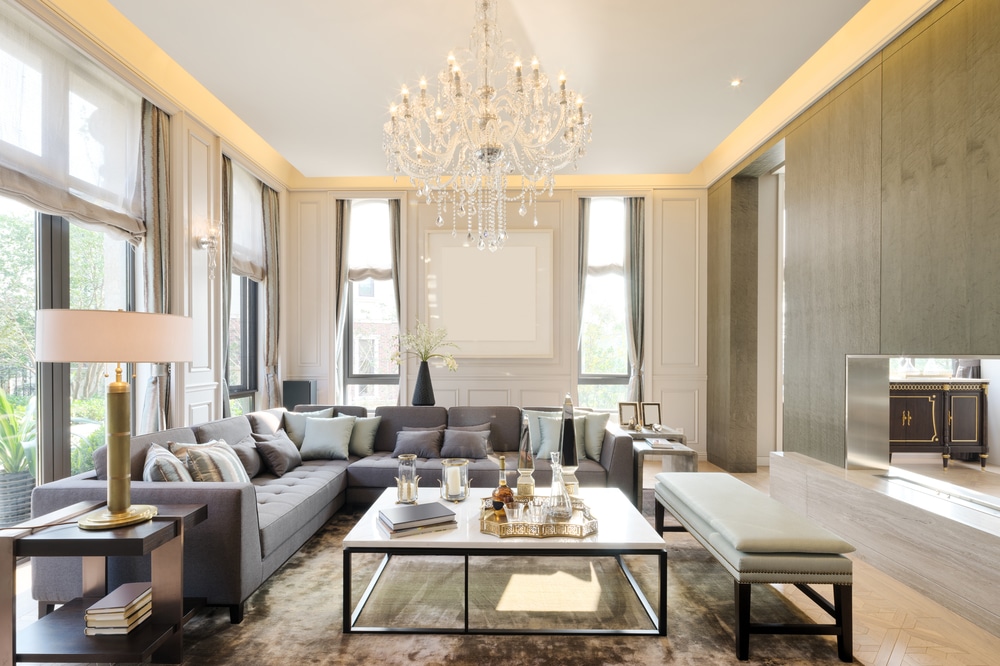 Chris Graham, consulting partner, ESRAR Real Estate Consultancy, on how the branded residential living will have a significant role to play in the real estate market
Chris Graham, consulting partner, ESRAR Real Estate Consultancy, on how the branded residential living will have a significant role to play in the real estate market
Since the turn of the millennium, the influx of the world’s leading international hotel operator brands has seen Saudi Arabia’s hospitality offering continue to broaden at an impressive rate. Unsurprisingly, with the massive national infrastructure development, robust economy, strong domestic demand, and increasing openness and outreach programme to attract overseas visitors under the stewardship of the Crown Prince, world-famous brands are eager to plant their flags in the Kingdom’s super-prime locations with luxury hotels and residences. Whilst the associated branded residential real estate market is still at an early stage with only a handful of branded developments being launched (e.g. Kempinski, Paramount/Damac, Ascott), this is expected to become a significant growth sector in the real estate market. With such a large domestic concentration of high net worth individuals, an increasing number of expatriate workers coming to live and work in the country, and the imminent opening up of the market to foreign lifestyle investors, conditions are highly favourable for the expansion of the branded residence concept along with the many benefits that it offers.
A notable example is Amaala on the Red Sea, which is attracting every leading hospitality brand to compete for the prime hotel and residential opportunities that will be offered in this 6* wellness and lifestyle resort. “Branding real estate creates an aspirational model that reflects the prestige and kudos associated with a luxury brand, facilitating standout in an increasingly competitive and crowded marketplace, in which consumer expectations continually rise,” explains London-based real estate marketing specialist Chris Graham of Graham Associates, author of a leading new report on branded residences, who hosted a workshop on the subject at the recent Saudi Arabia Hospitality Investment Conference in Riyadh.
Branded residences first appeared around a century ago in New York, yet today it seems surprising that they did not become an established model until the 1980s – and, even then, they remained a niche segment of the luxury real estate market targeting a privileged HNWI audience. These premium homes are in the best locations and associated (and usually co-located) with a 5* hotel, which provides a range of ‘at home’ services and luxury amenities to its neighbouring residents. Not much has changed in terms of the overall concept during the past 35 years; however, since the turn of the millennium, the growth of branded residences has been truly astonishing. Between 2002-2012 the number of hotel brands offering residences increased tenfold, whilst the number of branded schemes has almost tripled in the last decade and is forecast to grow by a further 27% in the next three years. “This remarkable growth has been driven by wide-ranging and proven benefits for developers, operator brands and purchasers,” observes Graham. “I describe this as an unusual “win-win-win” scenario, in which all of the parties can benefit.”
 Mirroring the increase in global wealth that has simultaneously multiplied the number of HNWIs since the new millennium, the growth is also evident in the variety of brands as well as global locations. Graham highlights how market participants have expanded beyond traditional hotel brands, now spanning a wide variety of sectors (and which he accurately predicted will continue to broaden). Companies licensing their brands to luxury residential real estate now include automotive manufactures (e.g. Porsche, Aston Martin, Lamborghini), interior designers (such as YOO), “Starchitects” (renowned global architects like Gensler, Foster+Partners, WATG), fashion and jewellery (high-end consumer brands such as Bvlgari, Versace, Missoni, Fendi, and Armani), restaurants (e.g. Nobu and Hard Rock) and media/entertainment companies (e.g. Paramount, Walt Disney, Fashion TV, and now high-end publisher Condé Nast). The preferred choice of accommodation among wealthy Saudi families is villas, increasingly residents and ex-pats are embracing the convenience of high-rise luxury living, which has spurred the growth of luxury residential towers in major cities across the Kingdom.
Mirroring the increase in global wealth that has simultaneously multiplied the number of HNWIs since the new millennium, the growth is also evident in the variety of brands as well as global locations. Graham highlights how market participants have expanded beyond traditional hotel brands, now spanning a wide variety of sectors (and which he accurately predicted will continue to broaden). Companies licensing their brands to luxury residential real estate now include automotive manufactures (e.g. Porsche, Aston Martin, Lamborghini), interior designers (such as YOO), “Starchitects” (renowned global architects like Gensler, Foster+Partners, WATG), fashion and jewellery (high-end consumer brands such as Bvlgari, Versace, Missoni, Fendi, and Armani), restaurants (e.g. Nobu and Hard Rock) and media/entertainment companies (e.g. Paramount, Walt Disney, Fashion TV, and now high-end publisher Condé Nast). The preferred choice of accommodation among wealthy Saudi families is villas, increasingly residents and ex-pats are embracing the convenience of high-rise luxury living, which has spurred the growth of luxury residential towers in major cities across the Kingdom.
Although most are not branded, they have introduced the concept of lateral elevated living and are paving the way for luxury branded condominiums in the region, mirroring the extraordinary growth seen in neighbouring GCC countries. Most branded residences offer owners a comprehensive range of integrated hotel-style services (and, increasingly, experiences), which include 24-hour concierge and security, transport, secure parking, porters, communications and entertainment systems, cleaning, babysitting, in-home dining, laundry and even shopping and fridge-stocking services. Smart homes are becoming universal. With the high demand for wellbeing, access to an on-site gym and fitness centre is now standard, usually with a spa and associated treatments, swimming pool, sauna and steam rooms.
Other premium facilities regularly include a cinema/screening room, private entertaining areas, golf simulator, kids’ and teens’ clubs, residents’ lounge, library, wine storage and, with the rise in home working, access to business centres and meeting rooms. Homeowners can also benefit from the option to rent out their properties through a managed rental programme (there is evidence that branded residences achieve both higher rental income and stronger resales prices). So, does having a renowned 5* name over your door really justify the higher price tag? “Well, if you look at the astonishing growth in the number of branded residences around the world, clearly large numbers of wealthy homebuyers consider that the numerous benefits that they deliver are indeed worth the extra cost,” says Chris Graham. “Fundamentally, luxury brands provide reassurance in terms of quality, design, maintenance, service and management of the residences; buyers know what they can expect. An established brand’s involvement implies a superior level of protection against risk, giving added confidence to buyers.” He points out that this is particularly relevant when buying an off-plan property, as purchasers know that it is likely to be completed, equipped, furnished and managed to the high standards that are commensurate with that brand. “It is all about peace of mind, which is a rare and valuable commodity in this day and age.”












